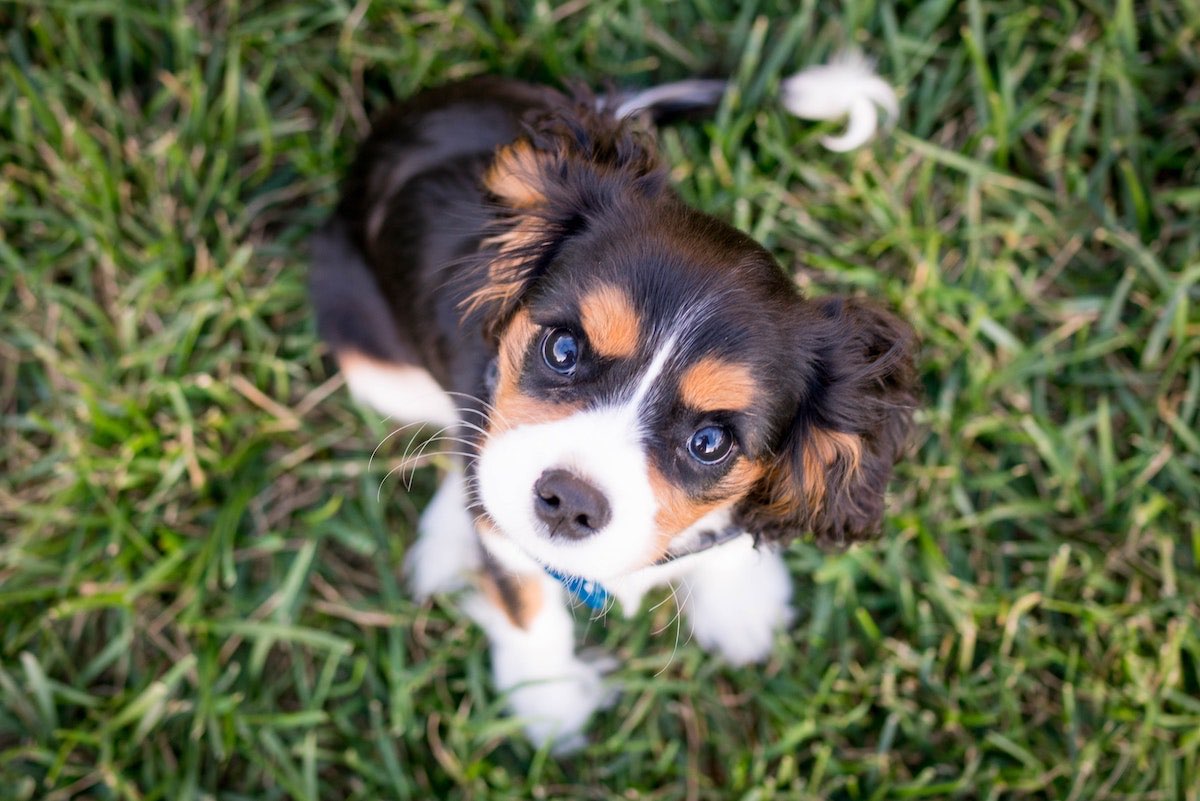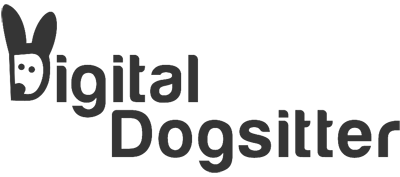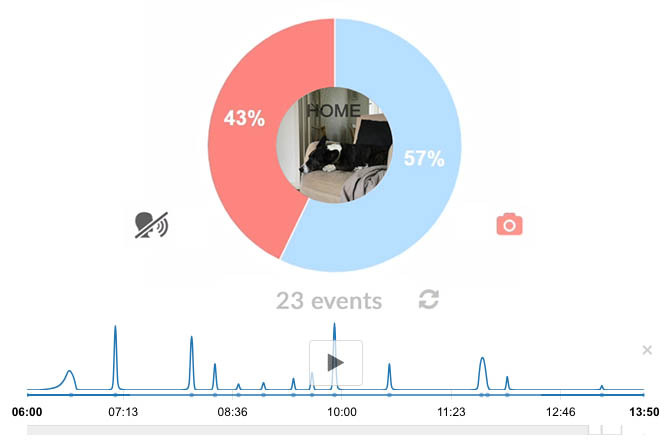The arrival of a new puppy at home brings about many new questions and challenges for their owners. Will the puppy get used to their new home? Can they learn how to be alone? How should they be socialized?
Fortunately, getting your puppy used to their new home is relatively easy, so long as they get enough rest and stimulation without becoming anxious or overwhelmed. There are also a few extra steps you can take to ensure that your puppy can tolerate being alone and that they're capable of having positive interactions with both strangers and other dogs. Putting in the time to train your puppy now is an investment into both of your futures!

There is a lot of talk about socializing a puppy. However, an equally important counterpart to socialization training is the often overlooked practice of separation training. Both are essential aspects of a puppy's educational needs as they enter adulthood.
Separation training is linked to a puppy's sociability. Though puppies by default have a strong drive to be with other people and animals, this impulse may be lessened if they weren't exposed to many new people or animals at the breeder, or if they happen to have an exceptionally fearful nature. If a puppy is inherently social, like the average dog, mismanaging the first steps of separation can scare them, leading to difficulties being alone as early as the puppy stage.
When it comes to socializing a dog, the health of the puppy must be taken care of first. This is because vaccinating a dog is necessary to safe socialization. Due to possible infectious diseases, many prefer early vaccinations, which are given as early as 7-9 weeks of age instead of the normal 12 weeks.
By vaccinating your puppy early, you're giving them the opportunity to get to know other dogs at a slightly younger age than the usual vaccination program. This is the ideal option, as the puppy's first stage of socialization, which can be significantly influenced by their owner, occurs during weeks 8-12 of the puppy’s life. In addition to this stage of socialization, the choices made by the puppy breeder play a major role in what the puppy considers dangerous and what they consider harmless.
If you end up opting for the normal vaccination program for your puppy instead of the early program, your unvaccinated puppy can interact with familiar, healthy adult dogs. While an unvaccinated puppy may not yet be able to meet other unknown dogs in close contact, they can watch them from afar from the safety of their owner's lap or behind a fence.
In terms of socialization, it's important to know that although a puppy sometimes learns from playing with other puppies, older, trustworthy dogs are an important teacher of social skills. The adult dog used to socialize the puppy should be friendly, while also being capable of showing the puppy what kind of treatment other dogs may feel nervous about. However, the adult dog should never be allowed to get violent. The gestures of a social, adult dog are, at best, very subtle when it wants space from the puppy. It can communicate to the puppy, for example, by turning to its side, moving further away, or ultimately by a quiet growl.
The more social a puppy becomes through these positive life experiences, the more important it is that the puppy understands how to calm themselves down when alone. Puppies don't inherently know how to be alone, and only a few puppies can tolerate the initial test where they're unexpectedly left alone during their owner’s absence. This is why it's worth investing in isolation training just as much as socialization training.
General Tips for Puppy Socialization and Isolation Training
Note: Step-by-step tips for separation training can be found further below!
- Let your puppy get used to their new family and immediate surroundings for a few a couple of weeks in peace before taking them to new environments. Also, be sure to take your puppy outside to do their business after they've eaten, slept, or played.
- After the introductory phase, start taking your puppy with you wherever they're allowed and safe to be. Always pay attention to the puppy's ability to cope and offer them plenty of opportunities to rest, and several full days off from new things every week.
- Remember that your puppy is still very small at this age and needs a lot of rest. It's important to let your puppy rest as much as they want, ideally in an accessible place with a comfortable bed. You can ensure that they get the rest they need by asking others in the household not to approach your puppy while they're sleeping.
- For the socialization phase, choose places that don't require the puppy to move unless they want to and at their own pace. Puppy exercise should be focused on training and playing outdoors. Excessive, forced exercise can have long-lasting negative effects on your puppy's health, including bone and joint function problems.
- Although your puppy needs a lot of attention, it's important that the attention is not undivided and constantly available whenever your puppy comes to you. An occasional lack of attention teaches your puppy from an early age that sometimes you may not pay attention to them when they want you to. However, always consider the puppy’s search for contact as a hint that the dog will need some social interaction. If there is another dog in the family, use a puppy pen or dog gate to keep the dogs apart for short periods. This will help your puppy learn how to be independent without other dogs.
- With a smaller puppy, it’s not a good idea to start doing separation exercises that include treats or lots of activities. Too much attention and/or rewards during training can accidentally cause a puppy to struggle even more when you're not around, as they now associate being alone with treats and extra attention rather than actually having to be alone. Familiarization, which is presenting separation slowly on a non-emotional level for the dog, is sufficient for the most part. With a very small puppy, training does not yet focus on the actual teaching of solitude, but on separation, where the puppy learns to be in peace further away from their people.
- Let your dog learn sociality with other dogs and with the help of a familiar, healthy adult dog that treats the puppy well and consistently. Also, arrange puppy playtime with other familiar puppies. At this age, puppies often only have experiences with their own breed, so make sure the puppy also sees dogs of different breeds. Keep your distance from dogs you don’t know or can’t guarantee will be healthy and friendly. You can also have your puppy observe dogs from a distance. The dog park is not a suitable place for a little puppy due to the risk of disease and potentially unpredictable dogs. If you do bring them there, make sure that they're not bullied or subjugated in the games of other puppies. In the best situations, there are usually only two puppies involved.
- Protect your puppy from fear — both of being left alone too early and of socializing. Let the puppy examine the exciting things of life in peace, while also allowing them to get as far away from those things as they want. If a puppy is forcibly exposed to exciting things, it is likely to become much more fearful as an adult. In situations where your puppy is accidentally frightened, be sure to behave calmly yourself — talking in a worried tone can make the puppy even more nervous.

Step-by-Step Tips for Puppy Separation Training
Please note that these tips are intended for use only with a puppy that does not experience separation anxiety.
1. Tolerating Separation Behind a Puppy Fence
Get your puppy a puppy fence or a dog pen that you can put in a central location, such as the living room. Let your puppy into the pen for short periods of time to eat, sleep, and chew bones several times a day. You can also cover the bottom of the pen with pee pads to facilitate good habits and begin potty training. Additionally, when using the fence or dog pen, your puppy is less likely to chew unwanted things in the home, as their access to objects will be limited when they're not supervised.
Start keeping your puppy in the pen for very short periods of time and open the gate shortly after they calm down. The puppy can leave the space if they want, but can also stay in to rest. Be careful not to make getting out of the pen too rewarding itself, so the puppy won’t be always eagerly waiting to get out. Please note that, at this point in the training, you should actually sit nearby the puppy and always within sight.
The purpose of this exercise is to keep your puppy calm during these minor experiences of separation. However, if you have misjudged the difficulty level, the puppy is not comfortable in the pen and calming down seems improbable, let them out. Never let them panic in the pen; instead, release them from the pen and return to the exercise later at an easier stage. Let the puppy recover before continuing with the training.
2. Distance From Their Owner
Once your puppy is used to puppy pen training, you can spend the next few days moving further away from their pen. Try doing a variety of exercises; sometimes staying closer and sometimes farther away. Remember that the length of these exercises is very short at this stage, only a few minutes.
3. Longer Periods of Independence in the Puppy Pen
You can encourage your puppy's independence by starting to do chores while they're resting, so long as those chores don't attract too much of their attention. When this feels like an everyday occurrence for your puppy, you can slowly begin extending their time in the pen. Vary between short and longer times in the pen so that your puppy doesn't start to anticipate your return based on a certain amount of time.
4. Leaving Their Field of Vision
When your puppy can remain calm for several minutes while you're further away from them, start walking into the next room without closing the door. Then return immediately to their sight. This shows your puppy that they don't need to be able to see you at all times to feel safe. You'll know when this phase of training is complete when your puppy can be at ease in their pen as you do your chores freely inside your home, including between different rooms.
5. Leaving Through the Front Door
When the puppy knows how to rest alone in the pen while you leave to other rooms, it is time to teach your puppy that you can also leave the house or apartment and that there are certain proactive signs involved, such as dressing yourself. The puppy should not be left alone in the pen, so you can train with your puppy resting in a place of their choice in the apartment.
The puppy has probably already seen you leave many times while staying with other people, and the situation is familiar and safe to it. When the puppy is resting, act as if you were leaving home normally (while the puppy stays with the caregiver). Observe your puppy and its mood when you leave, and take a step back in the training if your puppy gets nervous. Repeat the exercise a few times a week, only doing things related to leaving that don't make the puppy nervous. If the puppy does not naturally stay alone during a few sessions, so that you can leave the front door and be away for a few minutes without the puppy getting scared, you should switch to training methods that support solving the solitude problem instead of the methods in this article.
While doing this exercise, leave the house for varying intervals, such as 5 seconds, 10 seconds, 5 seconds, 15 seconds, 10 seconds. You can do this, for example, four times a day, a few minutes apart. Solitude should be practiced no more than five days a week. In addition, avoid too frequent, repetitive return and departure and make sure that the puppy remains calm throughout the training. Complete relaxation of the dog is the main goal of this exercise, so pay attention and be conscious of their level of calmness.
To escalate this exercise, you can increase their solitude for a few minutes at a time. When a puppy can be alone for 20 minutes, they're most likely capable of being alone for 40 minutes. When 40 minutes is possible, an hour is likely possible, followed by an hour and a half and two hours. However, you should not constantly increase the time of solitude. Let the puppy get used to being alone with easy exercises, too. Too fast a pace of progress can distress the puppy and cause loneliness problems in the future. Always have at least two easy, short sessions between the longer, more difficult exercises, plus one day off. Monitor your dog with Digital Dogsitter so you know for sure that they are quiet and calm.
6. Conditions for Longer Separation
Start paying close attention to your puppy's condition before long periods of separation. Have they gotten enough exercise? Have they eaten or gone outside today? Are they lacking in attention or affection? If your puppy is already missing one of these basic needs, it can lead to a higher likelihood of nervousness during their separation training.
If your puppy greets you vigorously when you return, it has probably experienced some level of nervousness. A reasonable greeting is still characteristic of the dog species after longer periods of solitude, but over-eagerness for your return will only follow if your absence has been particularly unpleasant. Instead of ignoring an overly enthusiastic puppy, next time focus on easing the difficulty level of the exercise. According to research, paying reasonable attention to the dog when leaving and returning does not increase or decrease the problem behavior of a dog with separation related problems, but complete inattention can worsen the symptoms.

Always Keep Your Puppy Safe
The most important thing about separation training and socializing your puppy is to keep them safe at all times. Protect your puppy from scary things like aggressive dogs and sudden abandonment at home. If your puppy looks worried or is trying to get away from things that frighten them, alter your training and exercises appropriately. Exposure to fear doesn't teach puppies good behaviors. It only teaches them that the world is frightening.
Need some help with monitoring your puppy throughout their training? With Digital Dogsitter, you can track your puppy's progress with ease. Digital Dogsitter allows you to record and listen to the sounds from your home while your puppy is there alone. You can even view your puppy pen remotely through live video. This helps you ensure that everything is going according to plan and that your puppy is safe and sound.
You can read more about separation related problems in our comprehensive guide Dog separation anxiety and other separation related problems.
 Deutsch
Deutsch English
English Español
Español Français
Français Italiano
Italiano 日本語
日本語 Português
Português Suomi
Suomi Svenska
Svenska




